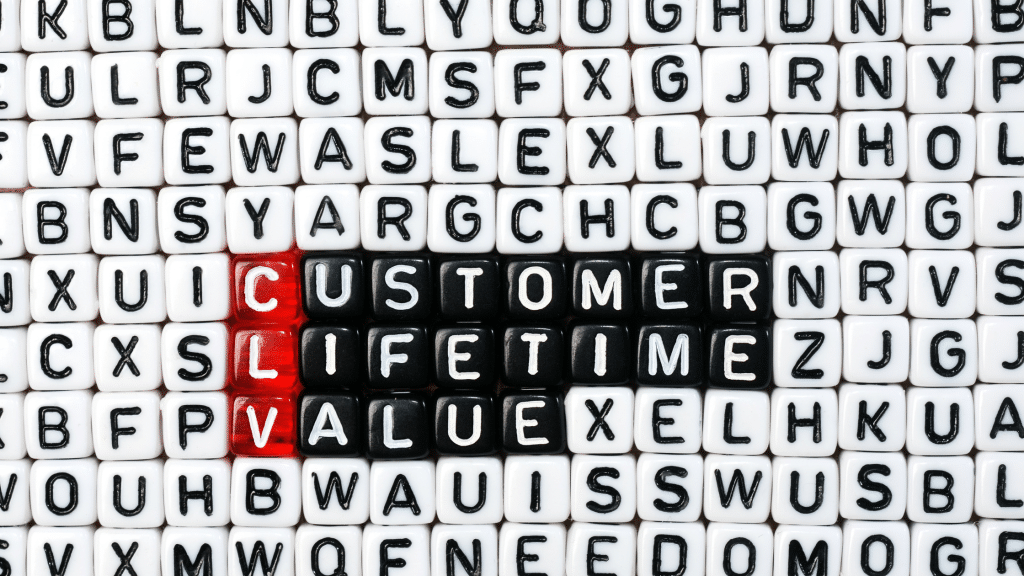As a business owner, one of your key business metrics is customer lifetime value (CLV). Enhancing your customer lifetime value (CLV) is vital for enabling sustainable growth and success. Understanding and optimizing your CLV enables you to evaluate the profitability of your customer base over time. You can then make informed decisions about resource allocation. This article explores the concept of customer lifetime value, how customer lifetime value important is, and how you can use it to grow your business. We also outline a key customer lifetime value example. A simple customer lifetime value calculation can help you grow your profit margin.
Understanding Customer Lifetime Value
CLV shows the total revenue a business can expect to generate from a customer over the course of their relationship. Instead of just focusing on a single sale, you can see the potential long-term value of a customer. Customer lifetime value represents the total value a customer brings to your business during your relationship. This customer value metric takes into account various factors. These include: repeat purchases, average order value, and the length of the customer relationship. Understanding customer lifetime value is important. Knowing your average customer lifetime value can guide your business decision making. When you know your customer lifetime value, you can make informed decisions about how much to invest in acquiring new customers (your customer acquisition cost) versus retaining existing ones. Remember: your customer acquisition costs are often higher than your customer retention costs.
The customer lifetime value (customer ltv) model gives you valuable insights into the effectiveness of marketing campaigns, customer segmentation, and business performance. When calculating value x average customer you consider various factors and data points. These include the frequency of customer purchases, the average purchase frequency rate, and the customer journey. You may also consider the term value, x average customer lifespan, and other metrics. When analyzing this, and calculating value x average customer, you can gain a comprehensive understanding of the value that each customer contributes to your bottom line.
The Importance of Customer Lifetime Value
Customer lifetime value (customer ltv) helps you identify your most valuable customers. Segment your customers based on their CLV. You can then develop targeted marketing campaigns and personalized experiences that cater to the specific needs and preferences of your high-value customers. This increases customer satisfaction and customer loyalty. In turn, this leads to a higher customer retention rate and increased customer lifetime value. Knowing your CLV helps you improve your business relationship and supports your customer retention efforts. It’s a great way to enhance your business strategy, and improve your average gross margin. A high CLV also helps you manage cash flow, improve your customer onboarding process. Your CLV calculations can be a great way to optimize your business model and improve your net profit.
Customer lifetime value also tells you more about your marketing campaign success. As an important metric, you track your CLV over a time period to assess the effects of your marketing efforts. This also helps you assess customer loyalty and profitability. You can refine your marketing strategy and optimize your return on investment. When you know your CLV, you can assign certain types of promotions to customer segments too. You can offer them free shipping, or a discount rate. You can assign a designated customer support team to your best customers and high value customers. You can connect with high value customers more effectively over social media. Using the customer lifetime value model helps you improve customer retention rates too. When tracking your CLV, you can also assess brand loyalty and your best customers. When you know your average revenue per customer, you can also predict future revenues. Knowing your CLV also helps you estimate your churn rate. You can also grow your gross margin of profit when you know the average number of your CLV.
Calculating Customer Lifetime Value
Calculating customer lifetime value can be complex, involving various factors and data points. The customer lifetime value formula considers the average customer lifespan, average purchase value, and purchase frequency. The customer lifetime value calculation can be simplified using the formula:
{Average Order Value} X{Average Purchase Frequency} X{Customer Lifespan}
For example, if your average customer makes three purchases a year with an average order value of $100 and has an average customer lifespan of five years, the CLV would be:
{CLV} = 100 X 3 X 5 = $1500
Your average customer is worth $1,500 over their lifetime.
Predictive Customer Lifetime Value
Predictive customer lifetime value takes the traditional CLV calculation a step further. A predictive clv model uses predictive analytics. Predictive analytics analyzes historic customer lifetime value data and customer behavior patterns. Predictive analytics then helps you forecast future revenue from customers more accurately. This approach enables you to identify trends and make proactive decisions to enhance customer retention and improve customer experience.
For example, a customer data platform can analyze past purchase behavior to predict which customers are likely to become loyal customers or churn. This predictive insight enables you to tailor your marketing efforts and allocate resources more effectively. This way, you can focus on retaining high-value customers.
Enhancing Customer Relationships
Building strong customer relationships is essential for maximizing customer lifetime value. Effective customer service and customer support play a significant role in enhancing the overall customer experience. By providing exceptional service, you can increase customer satisfaction, which improves customer loyalty and retention rates.
Implementing a loyalty program can also be an effective strategy to enhance customer lifetime value. Reward your customers for repeat purchases and encourage them to engage with the brand.
No-code tools for CLV enhancement
Choose the Right No-Code AI Tool
When implementing no-code AI tools like Graphite Note, it’s important to choose the right tool that aligns with your business objectives. Consider factors such as ease of use, scalability, and the availability of pre-built AI models specific to your industry. Look for tools that offer comprehensive support and guidance to ensure a smooth integration process.
How to Use No-Code AI Tools
Here’s how to use no-code AI tools to improve your CLV:
- Identify Opportunities: Analyze your business processes and identify areas where AI can add value, such as customer retention, sales forecasting, or demand planning.
- Collect and Clean Data: Data is the fuel that powers AI. Gather relevant data from various sources and ensure it is clean and accurate for optimal results.
- Design AI Models: Using a no-code AI tool like Graphite Note, design and train AI models that align with your specific business objectives. Experiment with different algorithms and parameters until you achieve the desired outcomes.
- Deploy and Monitor: Once you have trained your models, deploy them in a test environment and closely monitor their performance. Continuously fine-tune and optimize your models to ensure they deliver accurate and actionable insights.

Measuring the Effect of No-Code AI Tools on Customer Lifetime Value
Key Performance Indicators to Monitor
Measuring the effect of no-code AI tools on customer lifetime value requires monitoring key performance indicators (KPIs) that reflect the effectiveness of your strategies. Some essential KPIs to consider include:
- CLV: Track the average customer lifetime value over time to gauge the effectiveness of your initiatives.
- Customer Churn Rate: Monitor the rate at which customers disengage with your business to identify areas for improvement.
- Repeat Purchase Rate: Measure the frequency at which customers make repeat purchases to assess customer loyalty and engagement.
- Customer Satisfaction: Gather feedback and measure customer satisfaction to evaluate the impact of personalized experiences and improved customer service.
Interpret the Results
Interpreting the results of your no-code AI initiatives requires a holistic approach. Look for patterns, trends, and correlations that provide valuable insights into customer behavior and preferences. Use these insights to refine your strategies and continuously enhance the customer experience.
Conclusion
Customer lifetime value is a critical metric that you must understand to optimize your strategies and maximize profitability. Using no-code AI tools, you can simplify the process of calculating CLV and gain valuable insights into your customer base. This comprehensive approach improves customer retention and drives sustainable growth.
Analyze your customer behavior, refine your marketing strategies, and invest in customer success initiatives. You can ensure that you are maximizing the value of your customer base. Understanding and enhancing customer lifetime value is not just beneficial, it is essential.





